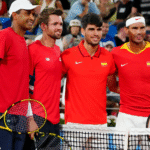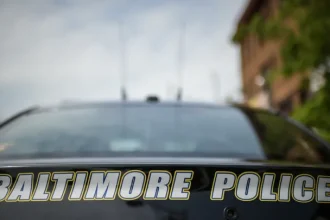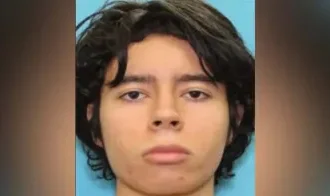As the ongoing war in Ukraine takes a devastating toll on the region, the focus of world leaders has shifted to potential peace negotiations. Recently, the Munich Security Conference (MSC) has become a key point of discussion, with global leaders examining the path toward ending the conflict. This comes on the heels of a shock phone call between US President Donald Trump and Russian President Vladimir Putin, in which the two leaders discussed the possibility of opening negotiations aimed at ending the war.
Describing the phone call as “great,” Trump expressed optimism about the potential for peace, noting there is “a good possibility of ending that horrible, very bloody war.” However, the future of Ukraine remains at the forefront of these discussions, with Ukrainian President Volodymyr Zelensky warning that his country must not be excluded from the peace process. European allies, meanwhile, have expressed concerns over any peace deal that could involve Russia gaining significant concessions, with French President Emmanuel Macron cautioning that such an agreement could “end badly for everyone.”
Although the specifics of any potential peace talks are still unclear, it is evident that the key issues of territory, security, and Ukraine’s relationship with NATO will dominate the discussions. Below is an exploration of the positions each side holds as they prepare for a future peace deal.
Territorial Disputes: The Status of Occupied Land
The ongoing territorial conflict has been one of the central issues of the war, with Russia currently controlling around a fifth of Ukraine’s land, particularly in the east and south. This includes the annexation of Crimea in 2014 and Russian-backed separatist movements in the Donetsk and Luhansk regions.
The war, which escalated into a full-scale invasion by Russia nearly three years ago, has seen Moscow’s military forces attempt to capture key Ukrainian cities. While initial attempts to seize the capital, Kyiv, were thwarted, Russian forces have continued to gain ground, especially in eastern Ukraine. In contrast, Ukrainian forces, bolstered by support from the United States and European allies, have launched counter-offensives and managed to reclaim some of the lost territory.
Ukrainian officials, including President Zelensky, have consistently maintained that any peace agreement must involve the full withdrawal of Russian forces from Ukrainian territory, including Crimea, Donetsk, and Luhansk. “We will never recognize occupied territories as Russian,” Zelensky said during a press conference at the MSC.
On the other hand, Russia has formally annexed these regions and is insistent on recognizing them as part of its sovereign territory. Despite not having full control over all the areas it claims, Moscow remains firm in its position.
There has been some discussion of a possible exchange of territories. In an interview, Zelensky suggested that a peace deal could involve swapping Ukrainian-held territory in Russia’s western Kursk region for Russian-occupied areas in Ukraine. However, the Kremlin swiftly rejected this idea, making it clear that such a territorial exchange is not on the table.
The United States, traditionally a strong ally of Ukraine, has expressed concerns about the feasibility of returning Ukraine to its pre-2014 borders. Pete Hegseth, the new US Secretary of Defense, has described the goal of reclaiming all of Ukraine, including Crimea, as “unrealistic.” According to Hegseth, pursuing this objective would only prolong the war and result in more suffering for both sides.
Ukraine’s NATO Ambitions: A Security Guarantee or a Complicated Road Ahead?
One of the central topics in the peace discussions is Ukraine’s desire to join NATO. Kyiv argues that NATO membership is the best way to ensure the country’s security in the face of Russian aggression. For Ukraine, Russia’s invasion serves as clear evidence that only NATO membership can guarantee its safety and protect its sovereignty.
However, NATO membership is a contentious issue for Russia, which has long opposed the idea of Ukraine joining the alliance. Moscow fears that NATO’s expansion eastward would bring military forces too close to its borders, which it views as a direct threat to its national security.
At the MSC, President Zelensky reaffirmed Ukraine’s trust in NATO’s security guarantees. He also noted that membership would be the “cheapest option for everyone” in terms of long-term security. Despite this, NATO members remain divided on the matter. While some European leaders, such as UK Prime Minister Sir Keir Starmer, have assured Zelensky that Ukraine is on “an irreversible path” to NATO membership, the reality is that the likelihood of Ukraine joining NATO as part of a negotiated peace deal is increasingly uncertain.
US officials, including Hegseth, have publicly stated that NATO membership for Ukraine is “not a realistic outcome” of any future negotiations. This starkly contrasts with the assurances Zelensky has received from other NATO members and reflects a growing sense of skepticism about the long-term viability of NATO expansion in the region.
Security Guarantees: The Future of Ukraine’s Defense
If NATO membership becomes an unachievable goal in a peace settlement, Ukraine’s focus will shift to securing alternative security guarantees. At the MSC, Zelensky expressed frustration over what he perceived as mixed signals coming from the United States. Despite previous discussions with President Trump, Zelensky argued that more concrete plans are necessary to ensure Ukraine’s protection moving forward.
US defense officials have made it clear that any security arrangement that does not involve direct military involvement from the US will likely be ineffective. Zelensky has indicated that security guarantees, such as those provided by NATO, would not work without active participation from the United States.
In terms of potential security arrangements, there has been talk of providing Ukraine with enhanced air defense capabilities, possibly involving advanced systems like Patriot missiles. Some reports suggest that the US may agree to deploy these systems as part of a broader peacekeeping force in Ukraine. However, it is unclear what role NATO allies would play in these arrangements or whether such a plan would be acceptable to Russia.
Zelensky’s security plan, presented to Ukraine’s parliament last year, also called for joint US and EU protection of critical natural resources in Ukraine, along with a non-nuclear strategic deterrent deployed on Ukrainian soil. While it remains unclear whether these proposals will be included in any peace talks, Zelensky has warned that any agreements without direct US involvement will fall short of what Ukraine needs for long-term security.
What Lies Ahead: The Path to Peace
As the war in Ukraine continues to devastate the country and its people, the path to peace remains uncertain. Territorial disputes, security guarantees, and NATO membership are just a few of the critical issues that will shape the negotiations. While the phone call between Trump and Putin has raised hopes of a potential end to the war, significant challenges remain for both sides.
With the international community looking on, the pressure is mounting for a resolution that secures a stable and lasting peace in the region. For Ukraine, the priority is clear: the full withdrawal of Russian forces, recognition of its territorial integrity, and a firm security arrangement to prevent future aggression. For Russia, the key objective is the recognition of its annexed territories and the prevention of NATO expansion into Ukraine.
As these complex discussions unfold, one thing is certain: the future of Ukraine will be determined not only by the outcome of the war but by the diplomatic negotiations that will shape the peace to come.















